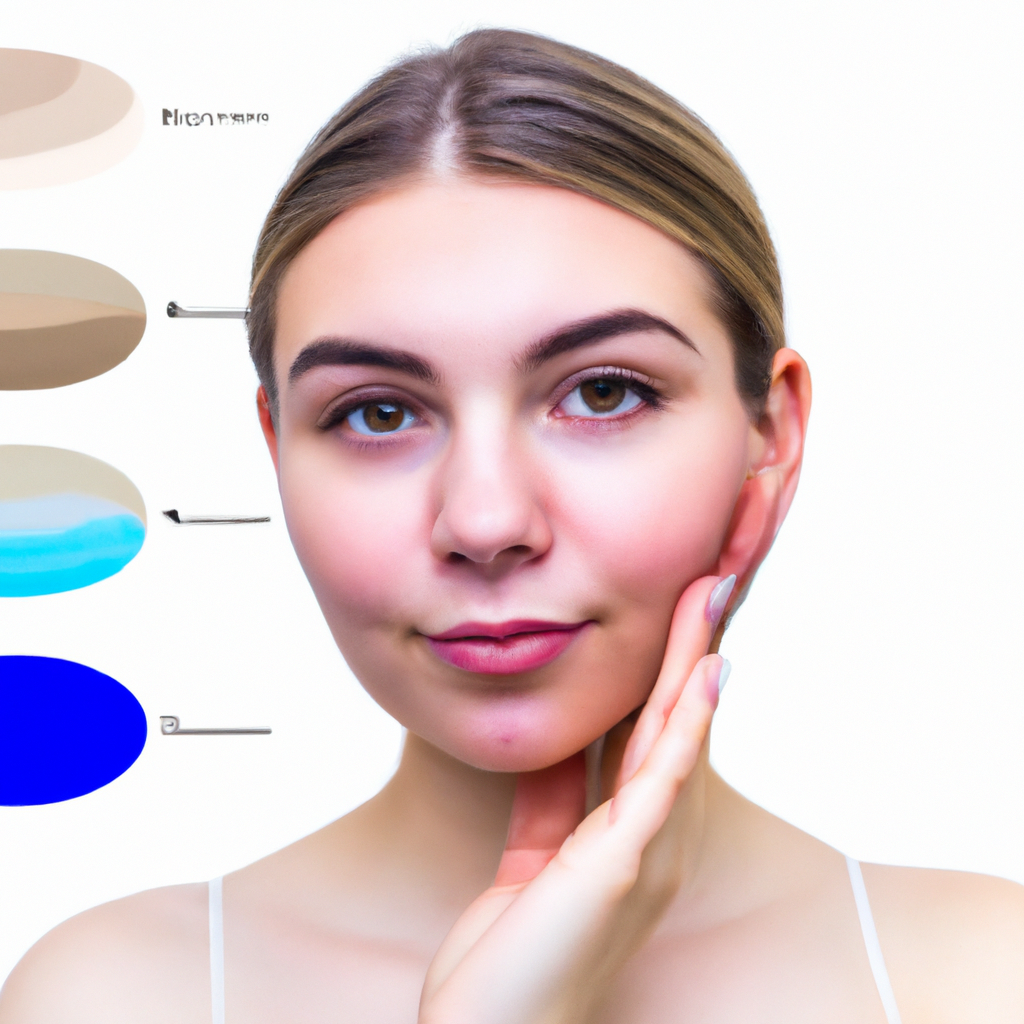We all want our skin to look flawless, but blemishes, redness, and discoloration can be troublesome to get rid of. Fortunately, with the right color-correcting techniques, you can easily hide those annoying skin imperfections. Read on to find out exactly how you can become an expert at covering up common skin issues in just a few simple steps!
1. Getting to Grips with Color-Correcting
Color-correcting is an essential part of any video editing workflow. It helps to adjust various color-related aspects of a shot and ensure that it looks just right. But it’s also one of the more complicated aspects of the editing process, so how do you make sure you get it right?
Understand The Fundamentals of Color-Correcting
Before tweaking any of your video’s colors, it’s important to understand the basic principles behind color-correcting. Study up on some of the major terminology such as color temperature, midtones, highlight and shadow levels, and color balance. Once you understand each of these concepts, you’ll be equipped with the foundational knowledge you need to start tweaking your video’s colors.
Learn How to Use the Color Wheel
The color wheel is one of the most important tools at any color corrector’s disposal. It provides a visual representation of the various colors and their relationships with each other, so you can easily figure out how to get the exact hue and tone you need. Learning the ins and outs of the color wheel is a great way to ensure you can make quick and accurate adjustments to your shots.
Develop Your Own Color Palette
When you’re color-correcting, you may find yourself returning to the same colors and tones multiple times. With this in mind, it can be helpful to create your own color palette so you can quickly reach for the exact shades you need. You can create a library of colors that you can pull from each time you need to make an adjustment, making the whole process far more efficient.
Practice Makes Perfect
As with any skill, the best way to get to grips with color-correcting is to practice. Open up your editing software and try out different looks and styles until you find a selection that you like. Even if you don’t love what you create, keep tinkering and learning until you’ve mastered the art of color-correcting!
2. Exploring Essential Color-Correcting Tools
When it comes to color correcting images, there is no one-size-fits-all answer. Different photographers have different needs, which require different tools. But, whether you’re a professional photographer or an amateur, there are certain tools that are essential for making great images.
Whether you’re shooting in RAW or JPEG, these tools can help you get the most out of your images. So let’s explore the essential color-correcting tools!
- Curves Tool: This widely-used tool is often the first thing people turn to when color correcting an image. It allows you to adjust the range of tones in an image, giving the image depth and balancing out the colors.
- White Balance Tool: This is perhaps the most important tool in any color-corrector’s arsenal. It allows you to adjust the overall tone and color of an image, giving it the desired effect.
- Levels Tool: This tool is used to adjust the tonal range of an image. It works by letting you adjust the shadows, mid-tones, and highlights of an image, thereby making it more visually pleasing.
- HSL Tool: This is the go-to tool for adjusting the hue, saturation, and luminance of an image. By changing the values of these parameters, you can create a stunning image that’s sure to stand out from the crowd.
- Color Balance Tool: This tool helps you quickly and easily adjust the colors of an image. It works by letting you adjust the red, green, and blue channels, allowing you to tweak the colors of the image.
These tools are great for making adjustments to color. But while they’re as powerful as other tools, they still need to be used with care. For instance, the curves tool can easily make an image look unnatural if you’re not careful. So make sure you always use these tools in moderation.
By employing these essential color-correcting tools, you can make stunning images that are sure to wow your audience. So why not take the time to get to know them better and make your images stand out?
3. Neutralizing Skin Imperfections Using Color-Correction
With a wide range of foundations and correctors, colour-correction is a great way to neutralize skin imperfections. Concealing dark circles, blotches, and other minor flaws can make all the difference when it comes to looking your best. Here are a few tips with colour-correction techniques to help you achieve a smooth complexion:
- Choose a shade close to your natural skin tone: Matching the shade of your corrective product to your skin tones prevents any unnatural colours from appearing on your skin. If you’re using a concealer, Bellegant Cosmetics recommends choosing one to two shades lighter than your natural skin tone.
- Blend for a natural look: Using a beauty sponge or foundation brush, blend the colour-correction product gently and slowly. That way, you can buff it into your skin for an almost-invisible finish.
- Set with a finishing powder: To make sure your concealer or corrector stay on, set it with a finishing powder. It won’t just keep it in place – it will also help it look more natural.
- Be mindful of your natural undertone: Make sure the colour-correction products you’re using don’t take away any of your natural undertone. Try to stick to products within the same shade range to prevent a colour difference in the skin.
Once you’ve mastered the basics, you can experiment with colour-correction and use it to create beautiful effects. Play around with pink, green, and blue colour correctors to stress certain facial features and create complex looks. Just remember to keep your colour-correction routine natural – don’t go overboard with too much product!
Proper colour-correction can take some time to master, but with a keen eye and the right corrective products, you can easily master the art of neutralizing skin imperfections and getting beautiful results.
4. Unveiling the Benefits of Color-Correcting
Color-correction is an essential step in image editing. It helps achieve an accurate representation of the original scene’s colors, creating the perfect photo or video. Here we’ll go through the many benefits of color-correcting.
- It helps recover lost details.
- It can improve focus and saturation.
- It helps achieve a global color balance.
Recovering the details of an image lost in its RAW format is one of the main benefits of color-correction. Color correctors can also modify the scene’s brightness and contrast, and can make it look sharper and more vibrant. Further, adjusting the color temperature to correspond with that of the original scene can restore much of the original detail, making it look natural.
Color correction can also improve focus and saturation. This editing technique involves the adjustment of brightness, contrast, saturation, and hue to make colors brighter, clearer, and more vibrant. This can be particularly useful when trying to create a vibrant and impressive piece of digital media.
Finally, color-correction can help achieve a global color balance, meaning that all colors will be equally represented in the final product. This can be especially important when creating a visually consistent and powerful video or image, as it ensures that the color temperatures of each scene will be the same.
As we’ve seen, color-correcting can bring out the best of any photo or video production. That is why it has become an essential part of the image editing process.
After combining all of these color-correcting techniques, you can now confidently face the world with glowing, brightened skin! No matter what skin imperfections you may be dealing with, you’re heading into the future with refreshed skin and a beautiful new you.

